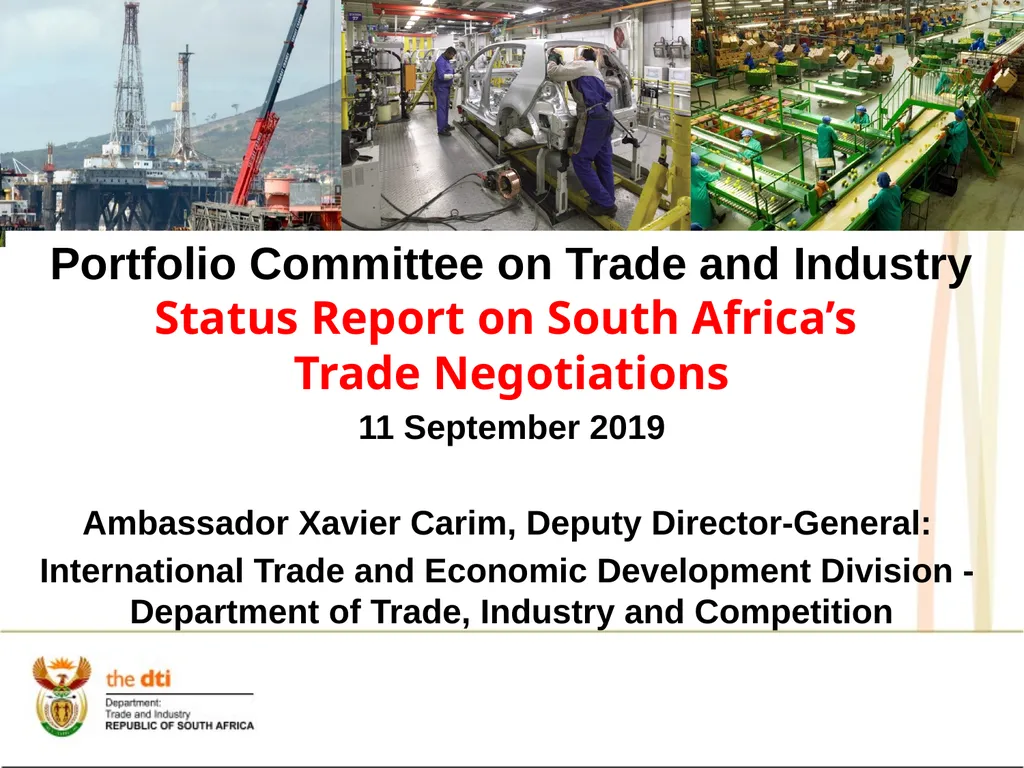
Portfolio Committee on Trade and Industry Status
Author: trish-goza | Published: 2025-05-24
Description: Portfolio Committee on Trade and Industry Status Report on South Africas Trade Negotiations 11 September 2019 Ambassador Xavier Carim, Deputy Director-General: International Trade and Economic Development Division - Department of Trade,
Download Presentation
Download the PPT/PDF: Download
Transcript:
Loading transcript…